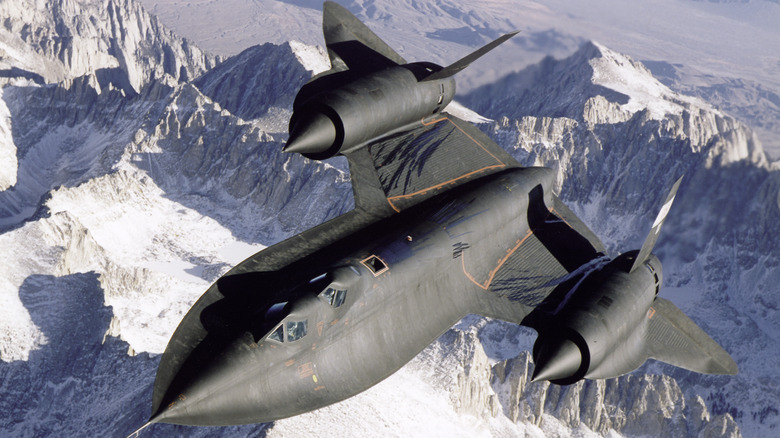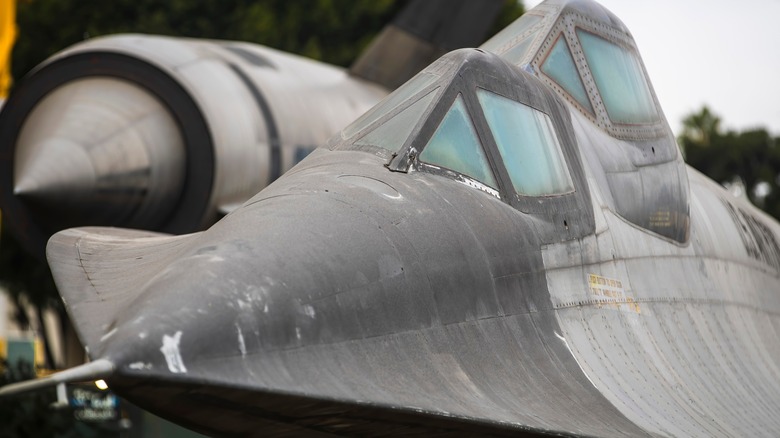What Makes The Windshield Of An SR-71 Blackbird Jet So Special?
The SR-71 Blackbird is easily one of the world's most iconic aircraft. They first took to the skies in the 1960s, and by the turn of the century, they were retired. Nowadays, you can only find SR-71s in museums, though you couldn't exactly find them when they were in service, which was partly the point. The SR-71 was fast — so fast it set records that have yet to be broken. Speed like that makes it difficult to see and fire upon, and no SR-71 was ever shot down, making it a highly successful spy plane.
The SR-71 was manufactured by Lockheed Aircraft Corporation and built in Burbank, California, where new tools and methods had to first be invented before the Blackbird could be produced. The aircraft featured so many unusual components; it was unique, and that goes from the very tip of its nose to its tail. One of the more interesting features of the SR-71 was its windshield, which is unlike the windshields and canopies of just about everything that flies ... save maybe for the Space Shuttle or other spacecraft.
This is because normal glass couldn't withstand the intense heat and pressure changes. While it's well known that the SR-71 was incredibly fast, one thing that many don't realize is how hot it was to operate. Cruising through the sky in excess of 2,193 mph generates a great deal of friction in the form of heat. These temperatures would distort or damage normal glass, so the SR-71's windshield was created from quartz.
The Blackbird's Unique Windshield
A chart of the SR-71 operating at high altitudes and high speeds shows that the external temperature of the windshield could reach 600+ degrees Fahrenheit. While that's not hot enough to melt glass, it is a temperature capable of blurring or distorting a traditional glass or tempered glass windshield. To combat this problem, engineers came up with a new process of not only creating windshields out of quartz, but they also managed to make the cockpit almost silent despite the intense sound just beyond the multi-layered double fused quartz (Also called fused silica) windows.
The windshield may be one of the last things non-aviators consider about the SR-71's incredible features, but it's nonetheless vital to the aircraft's operation. Unlike most jets, the windows of the SR-71 are small and split into four pieces. The reason for this has to do with the construction of the aircraft, but also because smaller windows limit the possibility of damage. While fused quartz has a melting point of 2,000 degrees Fahrenheit, there was still some concern over limiting damage.
To this end, the windshield was broken into smaller pieces rather than a single windshield or canopy, which was repeated for both the forward pilot and aft reconnaissance systems officer positions. The process of making the quartz windshields utilized high frequency sound waves to fuse the windows to the titanium frame. While not as flashy was the SR-71's mighty engines, the windshields remained unique and instrumental in the SR-71's use as a viable spy plane for years.

